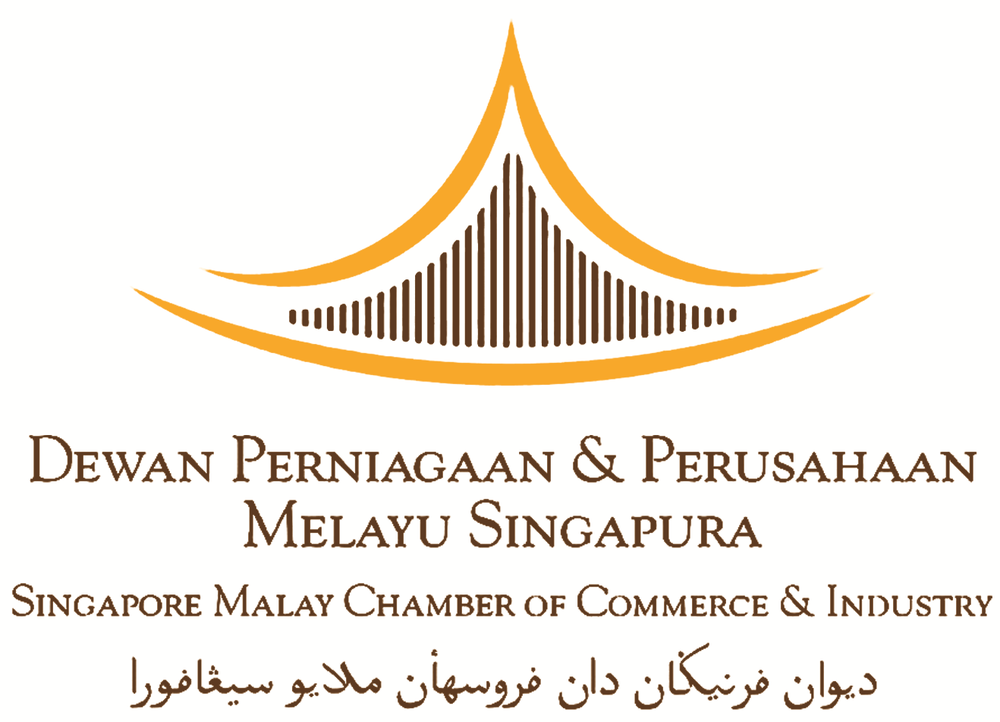- Real CBS Makeovers: 3 Case Studies of SME Owners Who Turned Bad Credit Around
- Ask SmartLend: Why Did My SME Loan Get Rejected?
- Introducing SmartLend Concierge: A Helping Hand for SME Loans
- Legal Ways to Lighten Your Company’s Tax Burden in Singapore
- A Wake-Up Call on Director Duties: The Envy Saga and Other Cautionary Tales in Singapore
- Surviving Cash Flow Crunch: How SMEs Can Use Short-Term Financing Wisely
- Unmasking Business Loan Fraud: How Syndicates and Rogue Brokers Game Singapore’s Lending System—and How AI Can Stop Them
- From Rejection to $60K Approval in 3 Days: How a Fishing Pond Business Got Funded Despite a Flawed Credit Report
- Lender Spotlight: How Poss Capital and SmartLend Partnered For Singapore SMEs
- Which Lender is Right for Your Business in 2025? Banks, Money Lenders, or Alternative Finance
Comprehensive Company Guide: CPF Contribution for Employees [Updated]

The article was published on 31 Jan 2023 and was most recently updated on 4 July 2023
Understanding CPF
The main purpose of CPF - which is administered by the Social Security System - is to ensure that Singaporean citizens have enough money for retirement. To achieve this goal, CPF plays three roles:
1) Retirement savings: CPF contributions are primarily meant to provide financial security for members in old age.
2) Housing: CPF funds can be used to purchase a home or pay for housing-related expenses.; and
3) Healthcare: CPF funds can also be used to pay for medical expenses in old age.
Why Do You Need It?
For employees, the rationale behind having CPF deductions taken out of their salaries is simple: If everyone had to make his/her own way in life, many would end up spending all their money and then find themselves in trouble when the time comes to pay for their retirement and medical expenses. Thus, CPF is seen as helping to prevent this scenario from happening.
CPF Contributions Entitlement
CPF contributions are mandatory for all full-time permanent, part-time permanent, casual, and temporary employees who are: - Singapore Citizens or Permanent Residents - Earning more than S$50 per month - Engaged under a contract for service. This includes those working at companies with subsidiaries in Singapore.
For trainees under SGUnited Trainesship Programme, CPF contribution is not payable as it is deemed not an employer-employee relationship.
Latest Business News: Senior Employees CPF Contributions For 2023
Starting on January 1, 2023, the overall CPF contribution for workers aged 55 to 60 would rise from the current 28% to 29.5%, a 1.5% increase. The increase will be split equally between the employer and the employee, with the employer contributing 0.5% and the employee contributing 1%.
Furthermore, the total CPF contribution for employees aged 60 to 65 would increase by 2%, from the current 18.5% to 20.5% in the same way. The increase will be split equally between the employer and the employee, with the employer contributing 1% and the employee contributing 1%.
The total CPF contribution for employees aged 65 to 70 will rise from the current 14% to 15.5%, a 1.5% increase. The increase will be split equally between the employer and the employee, with the employer contributing 0.5% and the employee contributing 1%.
Employers/Employees' CPF Contributions Starting 2023 (Contribution Rate Table)
Did you know that up to 20% of each employee's monthly wage in Singapore is put into their CPF accounts? Depending on the employee's age, this will change. The maximum salary for which CPF payments are required is also the first $6,000 of their monthly pay.
The employee's CPF contributions vary based on whether they earn, but the employer's CPF payments remain constant.
For better understanding, below table shows the changes of CPF contribution rates by both Employer and Employee in summary:
Age Range | 2016-2021 | From 1 Jan 2022 | From 1 Jan 2023 | From 1 Jan 2024 | By ~2030 |
≤55 | 37.0% | No Change | |||
>55 – 60 | 26.0% | 28.5% | 29.5% | 31.0% | 37.0% |
>60 – 65 | 16.5% | 18.5% | 20.5% | 22% | 26.0% |
>65 – 70 | 12.5% | 14.0% | 15.5% | 16% | 16.5% |
>70 | 12.5% | No Change |
Types of CPF Contributions
Two types of CPF Contributions are there for any Singapore citizens; Employer CPF contributions made to the employee's CPF account are often taxable when they are voluntary. On the other hand, compulsory CPF contributions are typically tax-free.
1). Compulsory CPF Contributions
The CPF Act sets out the mandatory contributions that employers must pay on their employees' ordinary and additional wages for citizens and permanent residents.
You don't need to pay any taxes for compulsory contributions.
2). Voluntary CPF Contributions
Additionally, employers may voluntarily contribute CPF funds to a worker's CPF account.
According to IRAS, employers' voluntary CPF contribution made in connection with employment is taxable. If there are excess voluntary CPF contribution made by an employee in the current year, then the employee must be provided with Form IR8S and the form must be submitted to the relevant authority.
If an employee submits a completed Form IR8S to IRS, then IRS will review the form and determine whether any additional tax was withheld from the employee's paycheck. Following that, IRAS will analyze the employee's evaluation appropriately.
For Singapore Permanent Residents (SPRs)
Life circumstances can occasionally modify your employee's SPR status.
If an employee gives up their SPR status, CPF contributions are due for the time that they were SPRs. From the day they are recognized as a foreigner, you can stop making CPF contributions.
In the same way, up to the day your Singapore PR employee becomes a Singapore citizen, the SPR contribution rates are in effect. Rates for CPF contributions will be in effect as soon as they become Singapore citizens.
The first two years of CPF contribution after achieving SPR status are at a progressive rate for both employer and employee to help with the transition as there can be a significant difference in take-home income for the employee. As an SPR, the full CPF contribution rates will be applicable starting in the third year.
The first year rate will specifically start to apply on the day your employee becomes an SPR. The month after the anniversary of his SPR conversion will see the implementation of the second and third year rates.
Depending on when Additional Wages (AW) are paid, employers may need to prorate the Ordinary Wages (OW) and apply the relevant Additional Wages (AW) contribution rates for these new citizens.
For 1st and 2nd Year SPRs, you can calculate CPF contributions for free here.
Key Terms To Know
Ordinary Wage (OW)
Ordinary Wages (OW) include any allowance (basic wage) that an employer pays to individual employee during that particular period, including food stipends and overtime wages. Before paying CPF contributions for that period, OW must be paid out in prior to contribution month.
Please note that the ordinary wage does not include the following:
- Overtime payments
- Leave pay
- Food allowance
- Other special payments
Additional Wage (AW)
In addition, there is another type of remuneration called additional wage (AW). An example of an additional wage could be the salary increase or bonus offered to employees based on performance evaluation. In general, the additional wage is the difference between the ordinary wage and the CPF contribution limit.
Do you feel like you still need to compute the amount of Additional Wage Ceilings to determine payable CPF for the year? To calculate, click here.
Recent Update To The CPF Ordinary Wage Ceiling
The change entails a raise in the maximum monthly wage amount that is eligible for CPF contributions. This adjustment is projected to benefit Singaporeans by allowing a larger portion of their income to be allocated towards their CPF. By doing so, individuals will be able to save more for their retirement and have a stronger financial foundation in the future.
In below table, it can be observed that the raise from $6,000 to $8,000 for the CPF Ordinary Wage (‘OW’) ceiling will be gradually implemented between 2022 and 2026. This change will affect the amount of CPF contribution a member receives each month based on their salary.
Essentially, it will decrease the amount of money they bring home as their take-home pay or nett salary. This adjustment aims to lessen the impact on members by staggering the increase over a 4-year period.
Table: How increasing CPF OW ceiling amount impacts on take home pay
In Year 2026, as it can be seen in the table above, a CPF member with a monthly income of $8,000 will experience a decrease in their take-home pay. This reduction will amount to $400, causing their monthly pay to drop from $6,800 to $6,400. However, there is no need to be concerned as this $400 has not disappeared, but instead has been transferred into the member's CPF account.
During a time of persistent inflation, it is believed that feeling a slight decrease of $400 in the household budget would not greatly impact a CPF employee's typical salary of $8,000. However, this reduction is still significant enough to be noticed. The government's reasoning behind raising the CPF OW ceiling is to assist middle-income CPF members in achieving retirement adequacy more swiftly, especially considering our increased life expectancy.
Oh, but there's a silver lining for CPF employees, you see. With this change, their employers will have to put more money into their CPF accounts because of the higher CPF OW ceiling. You should take a peek at Contribution Rate Table at the beginning of this article and get a better idea of just how much extra cash salaried-workers can expect.
Table 2: Total Contribution to CPF Account by Employee and Employer
The CPF Annual Limit of $37,740 remains the same. This sets a boundary on the highest wages that would result in CPF contributions. The CPF annual salary ceiling, derived from 17 months of OW ceiling, remains at $102,000. This restricts the maximum wages for attracting CPF contributions.
If your monthly earnings are higher than $6,000 and your total annual wages, including performance bonuses, surpass $102,000, this adjustment will not have a substantial impact on you.
Amount of OW and AW Subject to CPF Contributions
| Period | OW Ceiling | AW Ceiling |
| 1 Jan 2016 and onwards | $6,000 per month |
$102,000 less than Total Ordinary Wages subject to CPF for the year (*17 months x $6,000) |
Frequently Asked Questions
When do I have to pay my CPF contribution?
You must pay your employee's CPF contributions no later than the 15th day of each month. This includes the following months: February, April, June, August, October, December, January, July, September, November and May.
What happens if I'm late for CPF payment?
Employers may be charged late payment fees if they don't make the necessary CPF contributions for their workers by the deadline. A late payment penalty of 1% per month, compounded monthly, up to a maximum of 12% per year, may be assessed by the CPF Board on the late sum. From the deadline until the contributions are paid, the late payment cost is computed.
Can I contribute the full CPF rates for my Singapore PR employee during the first two year?
Both the employer and the employee may contribute CPF at the full rate during the first two years if an adjustment period is not required. There are two ways to do this:
Both the employer and the employee make full contributions, or the employer makes a complete contribution while the employee makes progressive contributions.
These higher rates call for a combined application with the SPR employee and may take effect as early as the day of the employee's conversion to SPR.
Read also: Navigating Singapore's Budget 2023: What Businesses Need to Know
Read also: The Ultimate Guide To Interning In Singapore: How To Find The Best Internships, Get Fair Pay, And Maximize Your Learning Journey
Read also: Career Conversion Programme (CCP) For SME Executives- Up to 90% Salary Support For Newly Hired
-------------------------------------------------------------------------------------------------------
Got a Question?
WhatsApp Us, Our Friendly Team will get back to you asap :)
Share with us your thoughts by leaving a comment below!
Stay updated with the latest business news and help one another become Smarter Towkays. Subscribe to our Newsletter now!
Related
.png)
Which Lender is Right for Your Business in 2025? Banks, Money Lenders, or Alternative Finance
Jul 02, 2025














